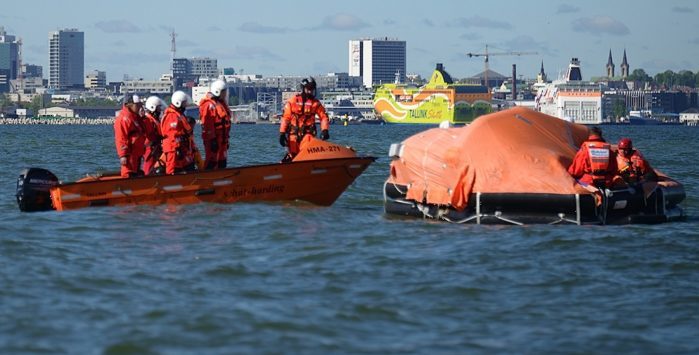As more people are heading out to sea over summer, safety both onboard and overboard is under the spotlight. For this reason, ISO updated the international guidelines for the effectiveness of sea anchors for rescue boats in the ‘ISO 17339:2018, Ships and marine technology – Life saving and fire protection – Sea anchors for survival craft and rescue boats.’
When we climb aboard any kind of boat or ship, it is essential that it functions properly and gets everyone to shore in case of emergency.
[smlsubform prepend=”GET THE SAFETY4SEA IN YOUR INBOX!” showname=false emailtxt=”” emailholder=”Enter your email address” showsubmit=true submittxt=”Submit” jsthanks=false thankyou=”Thank you for subscribing to our mailing list”]
A sea anchor is a vital component to a rescue boat, reducing the likelihood of it drifting away or spinning around, and keeps it steady in the wind. The updated ISO for the performance and safety of sea anchors brings them in line with the IMO’s International Life-Saving Appliance Code.
The International Life-Saving Appliance Code prescribes the carriage and use of sea anchors for survival craft and rescue boats, yet the revised recommendation on testing of lifesaving appliances does not provide requirements of performance and testing procedure for the sea anchors. This document addresses those areas, which the IMO recommendation does not address, in order to enable consistent implementation by maritime Administrations.
The new ISO addresses the performance and testing of sea anchors for survival craft and rescue boats and it is intended for use as a companion to the IMO Revised recommendation on testing of life-saving appliances and also to encompass all other relevant life-saving appliances covered by this document and not necessarily regulated by IMO instruments.
It also specifies requirements for the design, performance and prototype testing of sea anchors fitted to survival craft (lifeboats and liferafts) and rescue boats, according to the IMO International Life-Saving Appliance Code.
Its ultimate goal is to provide manufacturers with what is required to ensure the anchors not only work effectively, but endure the conditions in which they are stored, while it incorporates features test methods such as for strength, towing and corrosion.
According to Robin Townsend, Chair of the ISO technical subcommittee that developed the standard, the ISO 17339:2018 specifies the requirements, including details such as minimum required drag and resistance to weather.
ISO 17339 was developed by ISO technical committee ISO/TC 8, Ships and marine technology, subcommittee SC 1, Maritime safety, whose secretariat is held by ANSI, ISO’s member for the USA.
You can see the updated ISO 17339:2018, by clicking here


































































